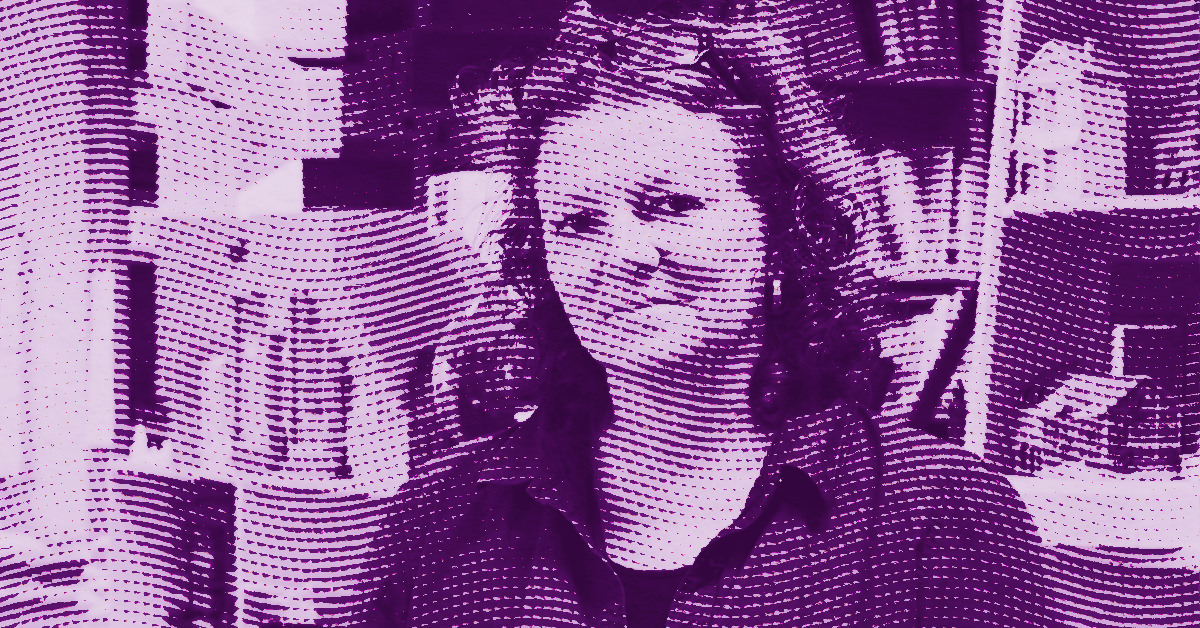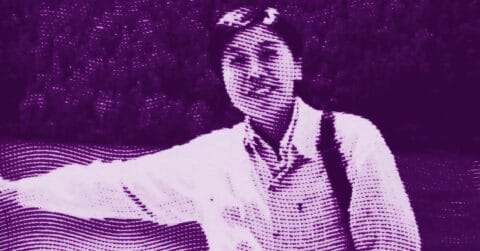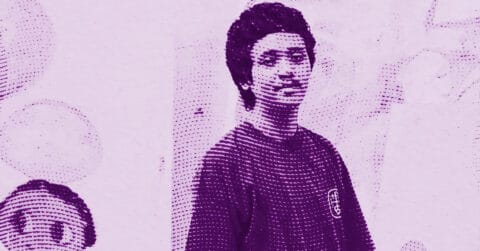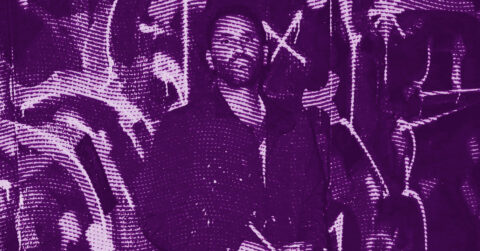Listen to me carefully, you bunch of snobs: Rachel Whiteread sculpts the invisible with the precision of a surgeon and the delicacy of a gravedigger. For more than three decades, this British artist born in 1963 has transformed our most mundane domestic spaces into funerary monuments of startling beauty. The first woman to win the Turner Prize in 1993, she revolutionized contemporary sculpture by casting not the objects themselves, but the voids they delimit.
Her process, disarmingly simple, consists of molding the air around us: the inside of a hot water bottle becomes a spectral torso in pink plaster, the space under a staircase turns into monumental concrete, the soul of a Victorian house is resurrected as a block of immaculate concrete. Whiteread does not reproduce the world; she exhumes its ghosts. Each work functions like a photographic negative of our existence, revealing what we never see: the hollow forms that give meaning to our lives.
This particular alchemy finds its roots in an initial gesture she describes herself as a “hallelujah moment”: at nineteen, she pressed a spoon into sand and poured molten metal into it. The resulting object has the shape of a spoon while having lost the function of a spoon itself. This artistic epiphany contains the germ of her entire aesthetic: elevating the banality of everyday life by a simple conceptual reversal.
Architecture as collective memory
Whiteread’s work maintains deep ties with the history of modern architecture and its social traumas. Born in the England of Margaret Thatcher, she grew up in an urban landscape marked by the systematic destruction of working-class neighborhoods and the privatization of social housing. This architectural violence permeates her most emblematic creations.
House (1993), her destructive masterpiece, embodies this political dimension with brutal force. By casting the interior of a Victorian house slated for demolition in London’s East End, she creates an unintended monument to a social class on the verge of extinction. The work, destroyed by the city council after only three months of existence, crystallizes the tensions around urban gentrification.
This concern for popular housing runs through all her production. Ghost (1990), a cast of the interior of a Victorian living room, functions as a domestic mausoleum where every detail, from the light switch to the soot-blackened fireplace, bears witness to the daily gestures of its former occupants. More recently, her Apartments and Stairs draw inspiration from the standardized post-war architecture, those social housing units whose proportions are measured on “the span of an arm” that define the minimum space for urban survival.
Whiteread’s approach resonates with the theories of architectural historian Spiro Kostof, who analyzes how domestic spaces reflect the power structures of a society [1]. For her, this political dimension never arises from explicit discourse but emerges from the very materiality of her casts. The raw concrete of her staircases evokes the brutalist architecture of large housing estates, while the immaculate whiteness of her cast apartments suggests the sterilization of rehousing policies.
Her recent works, such as Down and Up (2025) exhibited in the gardens of the Goodwood Estate, shift this architectural reflection towards the landscape. This concrete staircase emerging from a green field creates a striking collision between urbanity and the English countryside. Cast from a synagogue staircase in Bethnal Green, it carries the memory of communities displaced to increasingly peripheral spaces.
This geography of exclusion finds its fullest expression in her Shy Sculptures, works deliberately hidden in remote locations. Whiteread explains this approach as a reaction to the controversies surrounding her public works: “I wanted to move away from the turmoil and create something very silent, that almost no one would see.” These hidden sculptures function as secret monuments to social marginalization, visible only to those who venture to the edges of the urban world.
Architect Bernard Tschumi, in his analysis of “architectural violence,” shows how built space can become an instrument of social control [2]. Whiteread’s works reveal this violence through absence: her cast spaces bear the trace of the bodies that inhabited them while proclaiming their definitive disappearance. Each sculpture functions as a monument to the vanquished of urban modernization.
The poetics of mourning and the psychoanalysis of the object
Beyond its sociological dimension, Whiteread’s art explores the psychic mechanisms of mourning and memory. Her works function as transitional objects in the sense understood by psychoanalyst Donald Winnicott: they allow for negotiating loss by keeping present what has disappeared.
This dynamic appears with particular clarity in her early domestic casts. Torso (1988), a plaster cast of the inside of a hot water bottle, irresistibly evokes a mummified child’s body. Shallow Breath (1988), obtained by casting the space under a mattress, suggests the ghostly imprint of an absent sleeper. These works operate according to a logic of melancholic substitution: the solid object replaces the void left by disappearance.
Sigmund Freud, in “Mourning and Melancholia,” distinguishes normal mourning work from melancholic fixation [3]. Mourning accepts the loss and allows for progressive detachment; melancholia refuses this separation and maintains the lost object in a ghostly presence. Whiteread’s art seems to navigate between these two poles: it mummifies disappearance while making it tangible.
Her most disturbing works explore this intermediate zone where absence becomes presence. Closet (1988), a cast of the inside of a wardrobe covered in black felt, materializes the infantile anxiety of closed spaces. The artist projects her own childhood terrors into it, transforming an ordinary piece of furniture into a receptacle of primal anxieties. The black felt functions as a protective skin that envelops the void with an unsettling tenderness.
This tactile dimension runs through her entire work. Her translucent resins invite caresses while prohibiting contact; her rough concretes bear the imprint of vanished surfaces as if a skin retained the trace of a touch. Whiteread explains this particular sensuality: “I want my pieces to resemble family members.” This unsettling familiarity reveals the unconscious dimension of our relationship with domestic objects.
The series of chairs perfectly illustrates this substitutive logic. Untitled (One Hundred Spaces) (1995) lines up one hundred colorful casts of the space beneath different chairs. Each shape evokes an absent seat while suggesting the spectral presence of the person who used to sit there. The accumulation transforms these individual traces into a collective monument to all vanished bodies.
This poetics of absence finds its fulfillment in the Vienna Holocaust Memorial (2000). Whiteread reverses her usual method here: instead of molding voids, she positively reproduces thousands of books whose spines are turned inward, showing only their pages. This inverted library materializes the impossibility of transmission: the books are there but unreadable, present but inaccessible. The knowledge destroyed by Nazi barbarism becomes an impenetrable wall of silence.
The analyst Nicolas Abraham, in his work on the “psychic crypt,” describes how certain traumas are transmitted from generation to generation in the form of “ghosts” [4]. Whiteread’s sculptures function as collective crypts housing the ghosts of our lost objects. Each work retains within it the trace of vanished gestures, maintaining a bygone intimacy present.
Her recent creations, Poltergeist and Doppelgänger (2020-2021), more directly explore this haunting of the object. These gutted huts, uniformly painted white, evoke unexplained traumas. Branches and debris pierce them like stigmas, suggesting a mysterious violence. The immaculate white that covers them acts like a shroud that erases the origin of the drama while preserving its trace.
The eternity of the banal
This ability to reveal the extraordinary in the ordinary places Whiteread within an aesthetic tradition that runs through all modern art. Her most successful works perform this alchemical transmutation that elevates everyday banality to the rank of universal symbol.
Water Tower (1998), a temporary installation on a SoHo rooftop in New York, perfectly illustrates this poetics of revelation. By casting the interior of a water tower in translucent resin, she transforms this invisible urban equipment into a spectral lantern dominating the Manhattan landscape. The work disappeared and reappeared according to lighting effects, creating a subtle dialogue between presence and absence at the heart of the metropolis.
Her recent papier-mâché works reveal a sensitive evolution of her artistic vocabulary. Untitled (Lavender and Pink) (2022) molds corrugated metal sheets using scrap papers from her studio. These composite substrates create a domestic archeology where the layers of her creation overlap. Color, long absent from her work, emerges here with a lyrical violence that contrasts with the austerity of her earlier molds.
This stylistic evolution reveals an artistic maturity that refuses the mechanical repetition of her own processes. Whiteread now seems to explore systems of entropy and transformation rather than the frozen monumentality of her beginnings. Her new chaotic assemblages, like Untitled (Thicket) (2022), evoke recent catastrophes while retaining this unique ability to reveal beauty in desolation.
The thick paint covering these recent works acts as an “embalming” intended to resist degradation. This morbid metaphor reveals the existential dimension of her work: facing the wear of time and collective oblivion, art becomes the last bastion against disappearance.
Whiteread fully embraces this conservative function of art. She states her desire to “preserve the everyday and give authority to forgotten things.” This mission of poetic archiving brings her closer to the great collectors of the invisible, from Joseph Cornell to Christian Boltanski. But whereas the latter accumulate traces, she synthesizes them into pure forms that reveal the essence of what they preserve.
Rachel Whiteread’s work today stands as one of the most coherent and necessary in contemporary sculpture. By revealing the secret poetry of our most banal spaces, she reminds us that authentic art always arises from the ability to see the invisible. Her casts of emptiness do not merely create aesthetic objects: they reveal the tragic and sublime dimension of our condition as mortal beings inhabiting perishable spaces.
In a world obsessed with constant innovation and relentless consumption, Rachel Whiteread offers us the rare luxury of contemplation. Her white and silent sculptures create islands of peace where time seems suspended. They invite us to an intimate revolution that consists in looking anew at what surrounds us daily. For perhaps this is the true genius of this artist: teaching us to see beauty in what we never look at, to discover the extraordinary in the ordinary, to perceive presence in absence. In this way, Rachel Whiteread reconciles us with the mystery of our own existence.
- Spiro Kostof, A History of Architecture: Settings and Rituals, Oxford University Press, 1995
- Bernard Tschumi, Architecture and Disjunction, MIT Press, 1994
- Sigmund Freud, “Mourning and Melancholia” (1917), in Metapsychology, Gallimard, 1968
- Nicolas Abraham and Maria Torok, The Shell and the Kernel, Flammarion, 1987
















